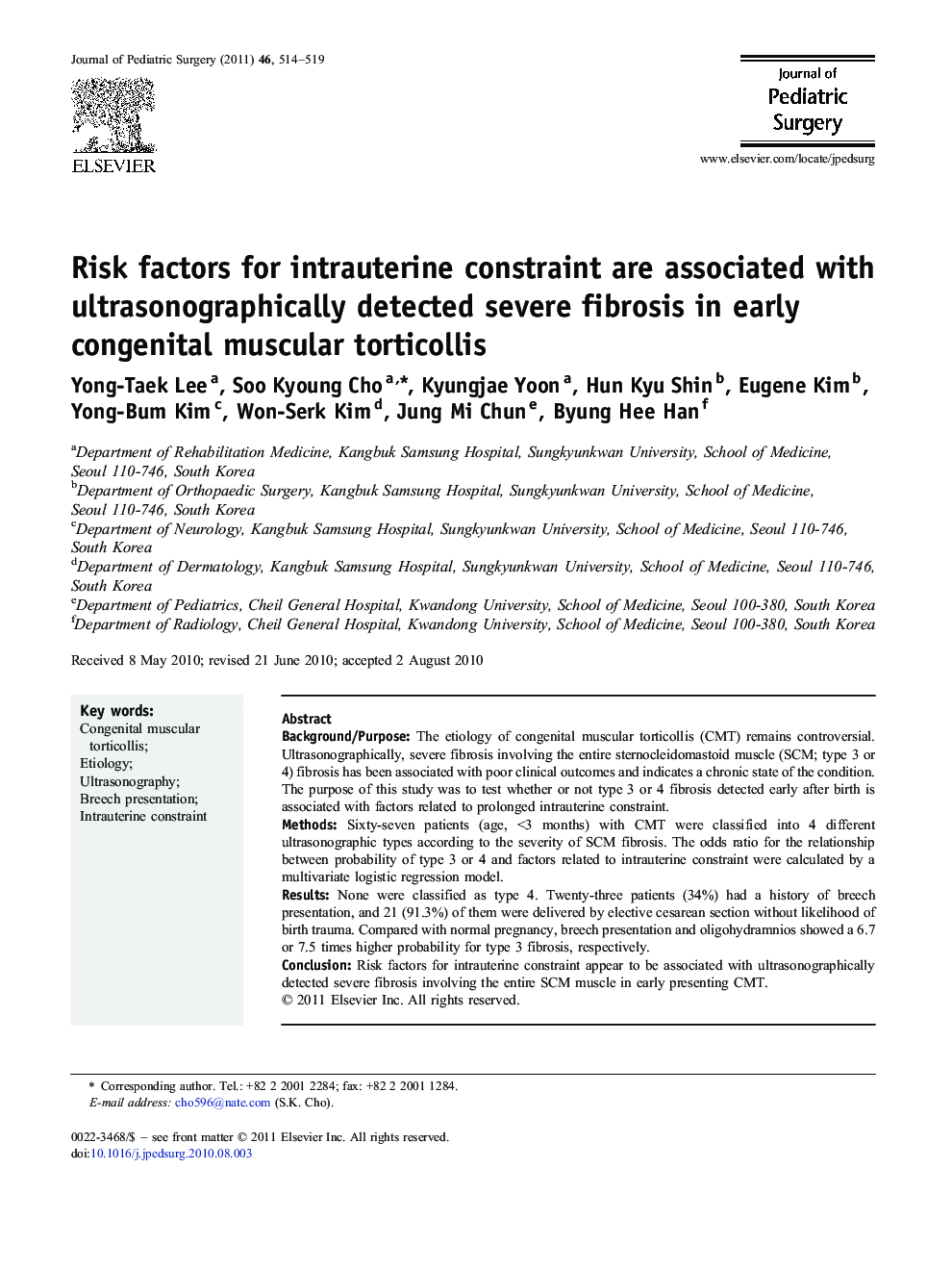| Article ID | Journal | Published Year | Pages | File Type |
|---|---|---|---|---|
| 6218055 | Journal of Pediatric Surgery | 2011 | 6 Pages |
Background/PurposeThe etiology of congenital muscular torticollis (CMT) remains controversial. Ultrasonographically, severe fibrosis involving the entire sternocleidomastoid muscle (SCM; type 3 or 4) fibrosis has been associated with poor clinical outcomes and indicates a chronic state of the condition. The purpose of this study was to test whether or not type 3 or 4 fibrosis detected early after birth is associated with factors related to prolonged intrauterine constraint.MethodsSixty-seven patients (age, <3 months) with CMT were classified into 4 different ultrasonographic types according to the severity of SCM fibrosis. The odds ratio for the relationship between probability of type 3 or 4 and factors related to intrauterine constraint were calculated by a multivariate logistic regression model.ResultsNone were classified as type 4. Twenty-three patients (34%) had a history of breech presentation, and 21 (91.3%) of them were delivered by elective cesarean section without likelihood of birth trauma. Compared with normal pregnancy, breech presentation and oligohydramnios showed a 6.7 or 7.5 times higher probability for type 3 fibrosis, respectively.ConclusionRisk factors for intrauterine constraint appear to be associated with ultrasonographically detected severe fibrosis involving the entire SCM muscle in early presenting CMT.
